
The standard keyboard for the IBM PC-compatible computers currently looks like this:

This keyboard is a generous, luxurious, and even extravagant design compared to what had been typical with computers and computer terminals in the past, providing a full numeric keypad, cursor keys, and twelve function keys.
IBM made a more compact version which simply omitted the numeric keypad; specimens of this keyboard are currently highly prized among those who find the level of tactile (and auditory!) feedback provided by contemporary keyboards (even those using quality mechanical keyswitches, such as those made by ALPS and Cherry) wanting.
Primarily in order to cut costs, the IBM PCjr came with a keyboard that achieved near-compatibility (some unusual shift combinations would not have been possible) using only 62 keys:
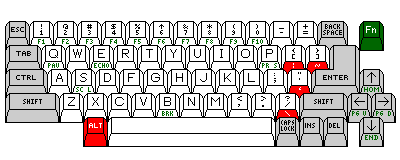
This was before two additional function keys were introduced to the IBM PC keyboard.
Here is the keyboard used with the IBM PS/2 model L40, an early IBM laptop:

Various arrangements have been attempted on laptops. One early keyboard diagram on this site represents a laptop-style arrangement:
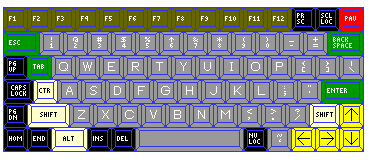
Trying to design a keyboard for desktop use, but with compactness based on laptop designs led me to this design:
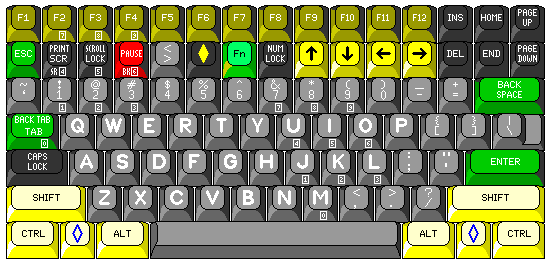
The Print Screen, Scroll Lock, and Pause keys are placed on the left side of the keyboard, so they can form the top row of a numeric keypad that rises upwards from the 1, 2, and 3 keys, thus retaining the usual form factor of a numeric keypad, as opposed to the usual laptop arrangement of moving downwards from the 7, 8, and 9 keys, and therefore being staggered as it uses the keys of the normal typing keyboard.
If keeping the traditional arrangement of the cursor keys is insisted upon, allowing the keyboard to be one row of keys wider permits a bit of empty space in the arrangement:
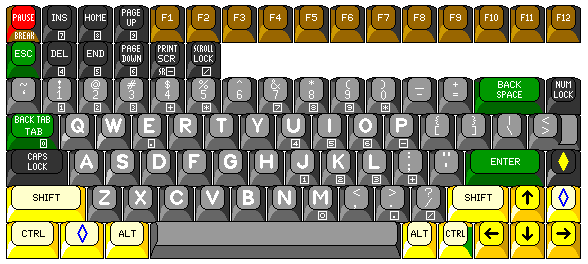
Even when I was considering new keyboard designs with a view to recapturing the old size and placement of the Enter key, without seeking compactness as a goal, a slight decrease in width resulted:
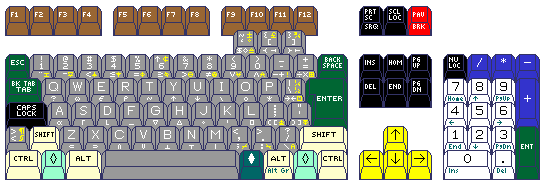
This can be taken further for the following compact keyboard arrangement, which reduces the need to remove the hands from the normal touch-typing positions:
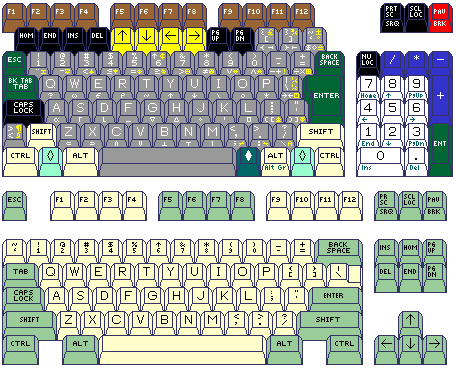
The total width of the area occupied by keys in this keyboard is 18 3/4 standard key widths of 3/4", or 14 1/16", given that the spacing between the numeric keypad and the main keyboard is half a key. It is only 1/4 of a key, or 3/16", wider than a standard keyboard with the numeric keypad removed, as the diagram above illustrates.
IBM did actually make a variant of the Model M keyboard from which the numeric keypad was omitted. Because the Num Lock key was still considered necessary, and that key was part of the numeric keypad, there was
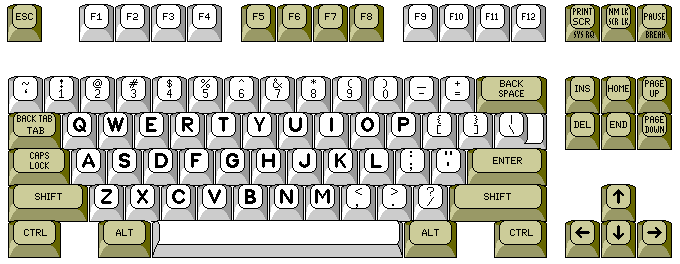
one small modification to the remaining part of the keyboard: the Scroll Lock key, when shifted, acted as the Num Lock key.
And here's a slightly improved version of that arrangement:
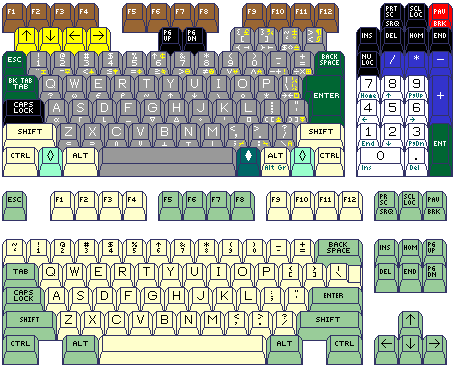
But this kind of arrangement is perhaps much too radical a change from that of a normal PC keyboard. Here is one that keeps the various groups of keys in the same arrangement as the standard:
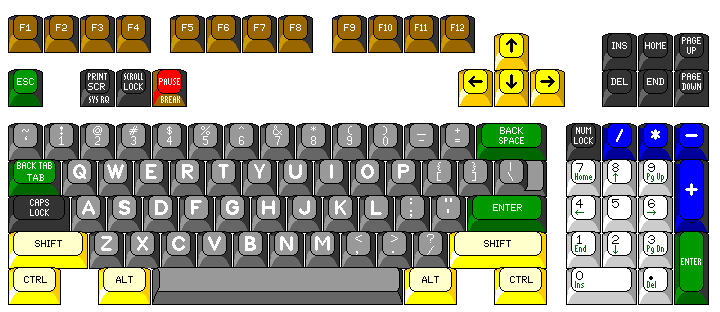
There was actually at least one keyboard manufactured which was in the same size category as the design shown above:
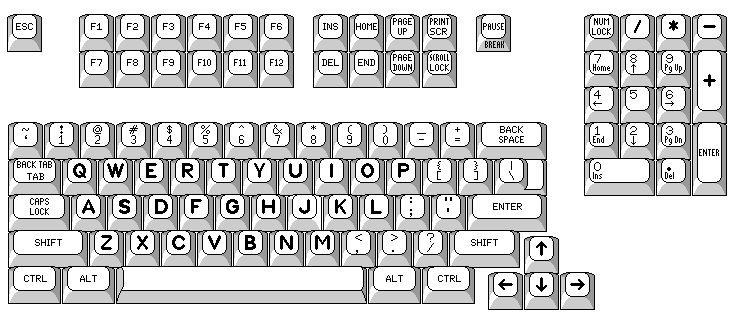
This keyboard included either a trackball or a touchpad in the lower right corner, being the Compaq MX 11800 and MX 11900 respectively in those versions; it was made for industrial and rackmount installations, and has a claim to fame as being a keyboard using Cherry switches (the type with brown stems) that is often available inexpensively on eBay.
Copyright (c) 2007, 2009 John J. G. Savard